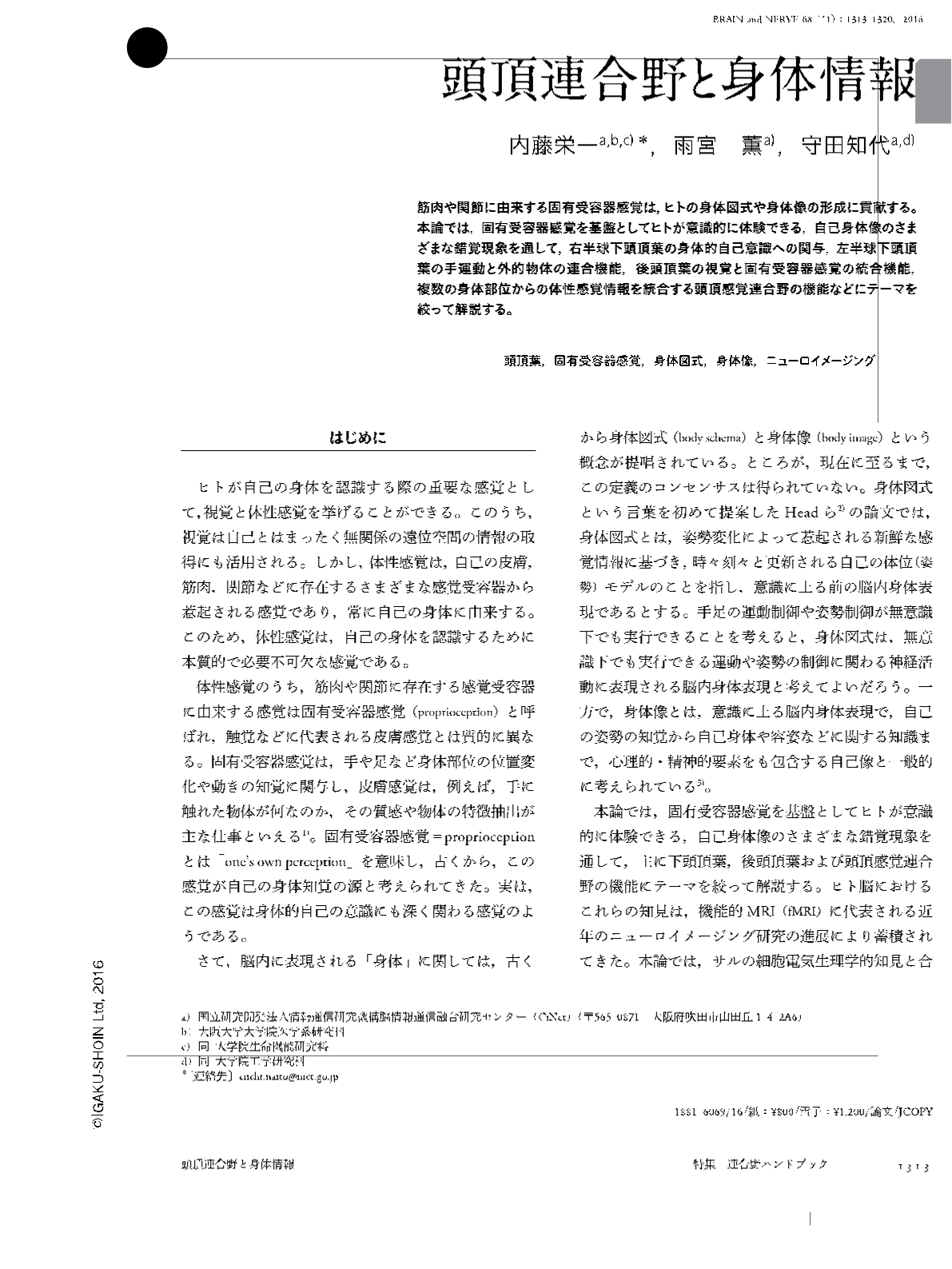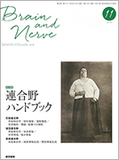Japanese
English
- 有料閲覧
- Abstract 文献概要
- 1ページ目 Look Inside
- 参考文献 Reference
筋肉や関節に由来する固有受容器感覚は,ヒトの身体図式や身体像の形成に貢献する。本論では,固有受容器感覚を基盤としてヒトが意識的に体験できる,自己身体像のさまざまな錯覚現象を通して,右半球下頭頂葉の身体的自己意識への関与,左半球下頭頂葉の手運動と外的物体の連合機能,後頭頂葉の視覚と固有受容器感覚の統合機能,複数の身体部位からの体性感覚情報を統合する頭頂感覚連合野の機能などにテーマを絞って解説する。
Abstract
Proprioceptive signals originating from skeletal muscles and joints contribute to the formation of both the human body schema and the body image. In this chapter, we introduce various types of bodily illusions that are elicited by proprioceptive inputs, and we discuss distinct functions implemented by different parietal cortices.
First, we illustrate the primary importance of the motor network in the processing of proprioceptive (kinesthetic) signals originating from muscle spindles. Next, we argue that the right inferior parietal cortex, in concert with the inferior frontal cortex (both regions connected by the inferior branch of the superior longitudinal fasciculus-SLF III), may be involved in the conscious experience of body image. Further, we hypothesize other functions of distinct parietal regions: the association between internal hand motor representation with external object representation in the left inferior parietal cortex, visuo-kinesthetic processing in the bilateral posterior parietal cortices, and the integration of somatic signals from different body parts in the higher-order somatosensory parietal cortices.
Our results indicate that a distinct parietal region, in concert with its anatomically and functionally connected frontal regions, probably plays specialized roles in the processing of body-related information.

Copyright © 2016, Igaku-Shoin Ltd. All rights reserved.


